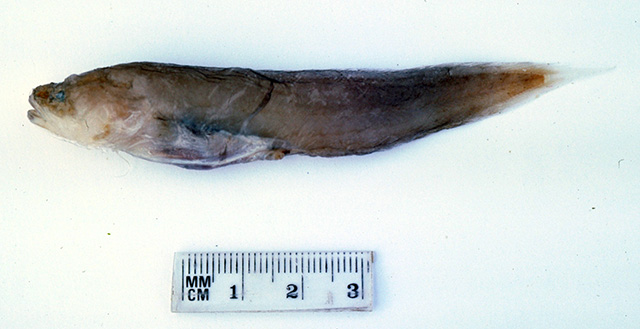| Bythitidae (Livebearing brotulas) |
| 16 cm SL (female) |
|
bathydemersal; marine; depth range 440 - 850 m |
| Indo-Pacific: off East Africa to Hawaii. |
|
Dorsal soft rays (total): 82-93; Anal soft rays: 54-60; Vertebrae: 55-58. This species is distinguished from its congeners by the following set of characters: body scaleless; frontal plate with a pair of small, sub-dermal spines just behind eyes, median sub-dermal ethmoidal spine in front of eyes; skin is rather thick; a large posterior mandibular pore behind end of maxilla; snout with a cartilaginous ethmoidal spine; opercular spine is hidden, no preopercular spine; anterior gill arch with 3 developed rakers, almost equal in length to developed rakers; pectoral peduncle is prolonged; no fangs on dentigerous bones, 3 to several tooth rows on palatines; vertebrae, precaudal 14-15, total 55-58; fin rays, D 82-93, A 54-60 and pectoral 19-22; otolith length to height, 2-2.1, otolith length to colliculum length variable, 2.5-3.3 (Ref. 93007). |
| A benthic species (Ref. 58302) found on the continental slope (Ref. 75154). Rare species (Ref. 34024). |
|
Least Concern (LC); Date assessed: 16 August 2019 Ref. (130435)
|
| harmless |
Source and more info: www.fishbase.org. For personal, classroom, and other internal use only. Not for publication.
